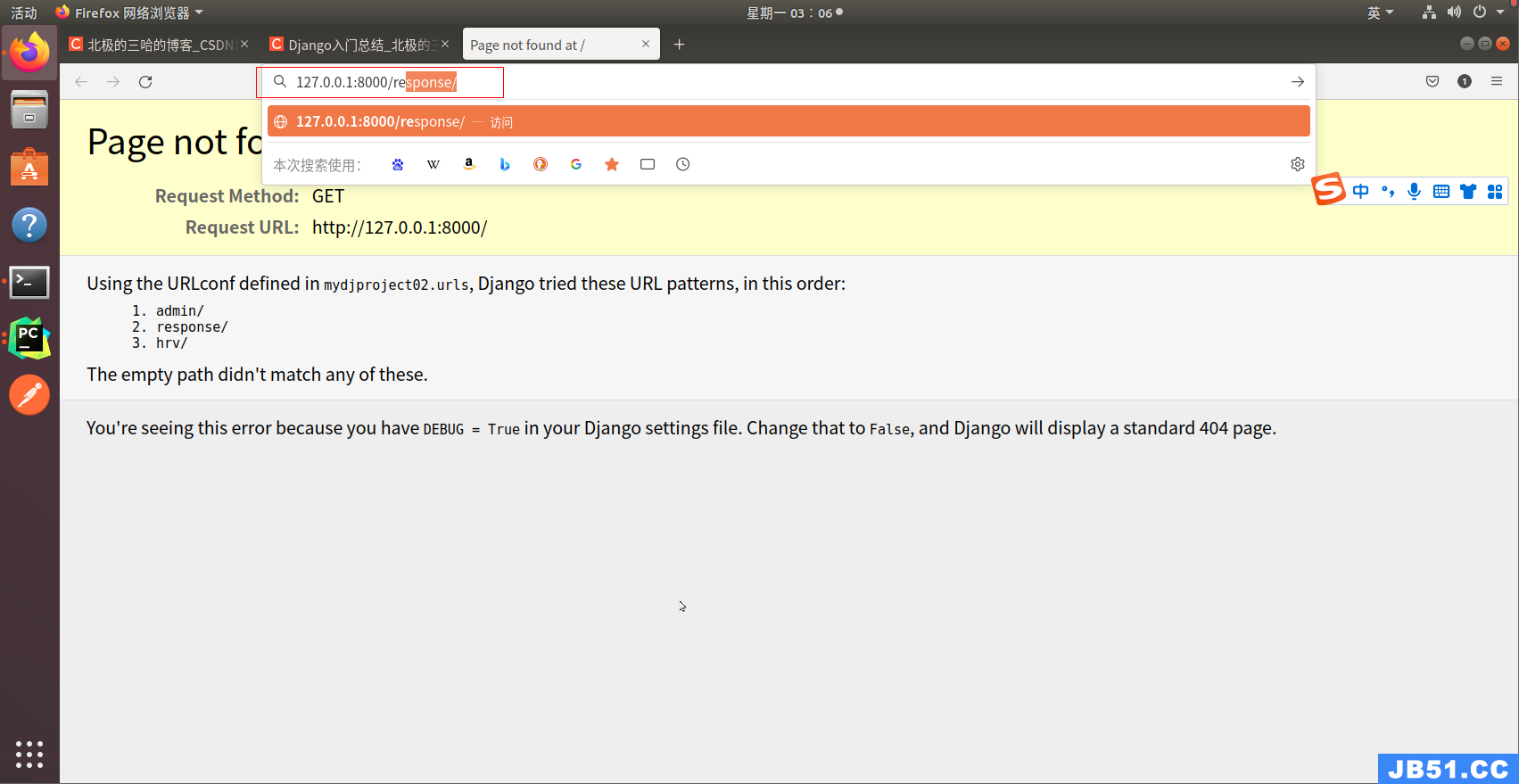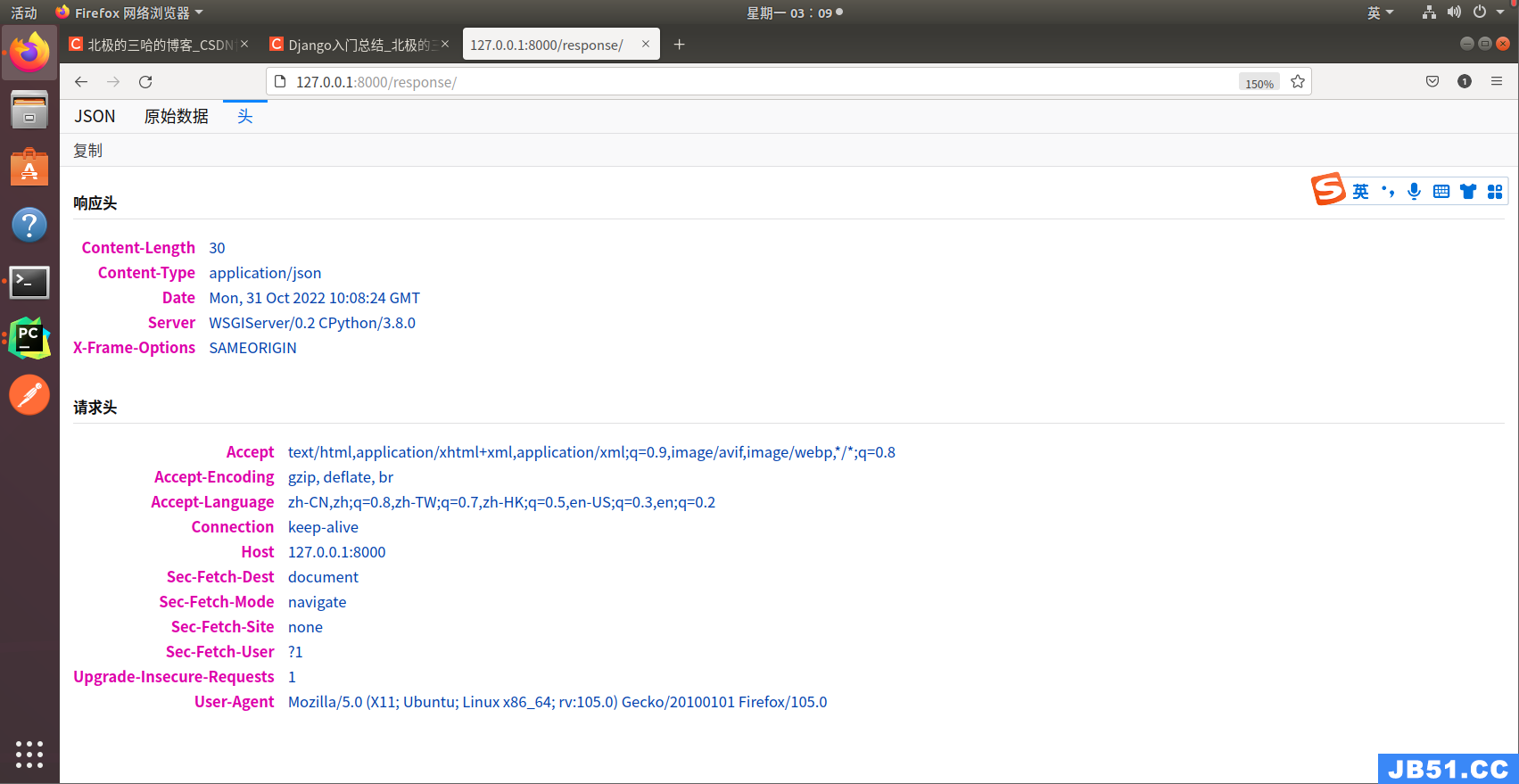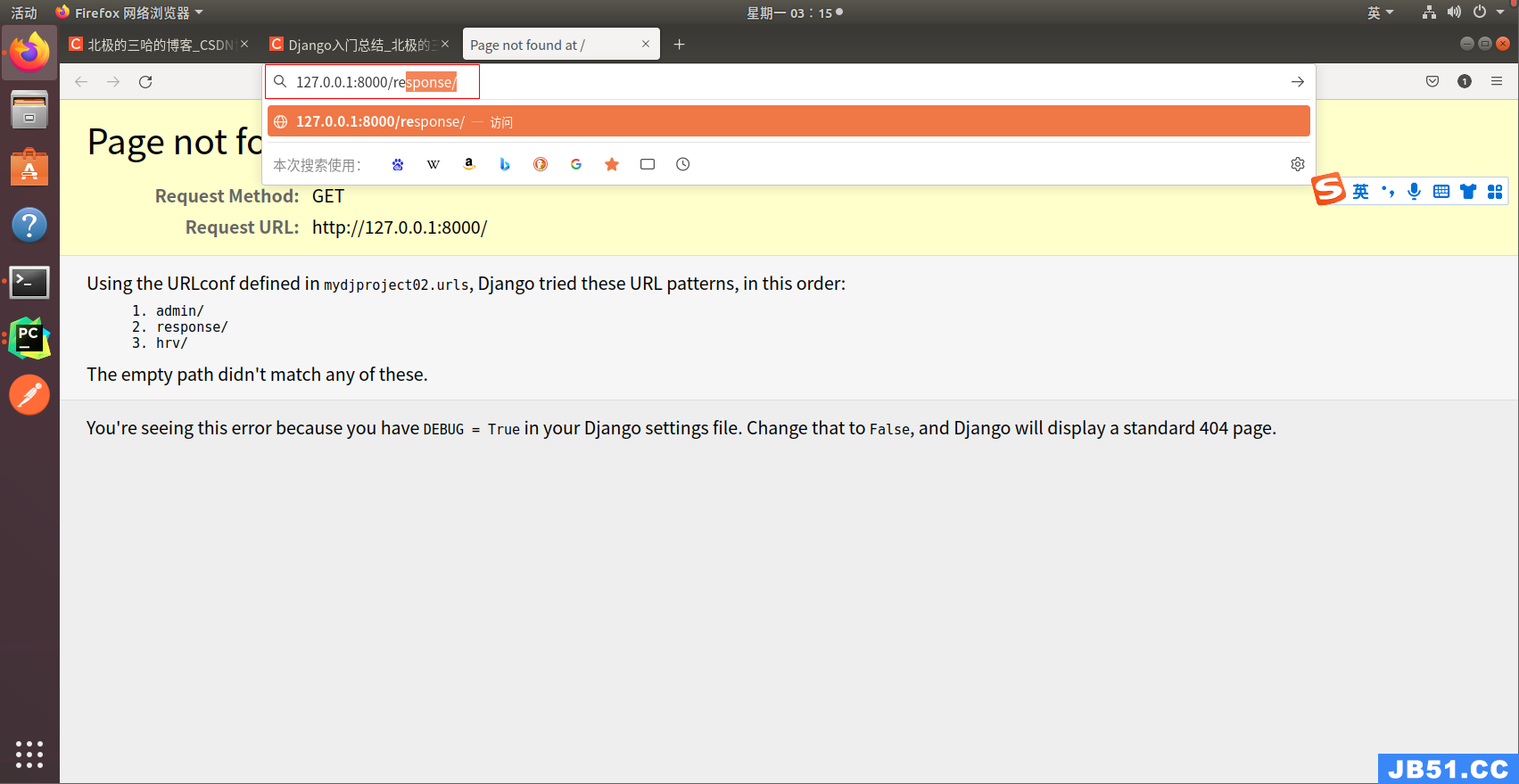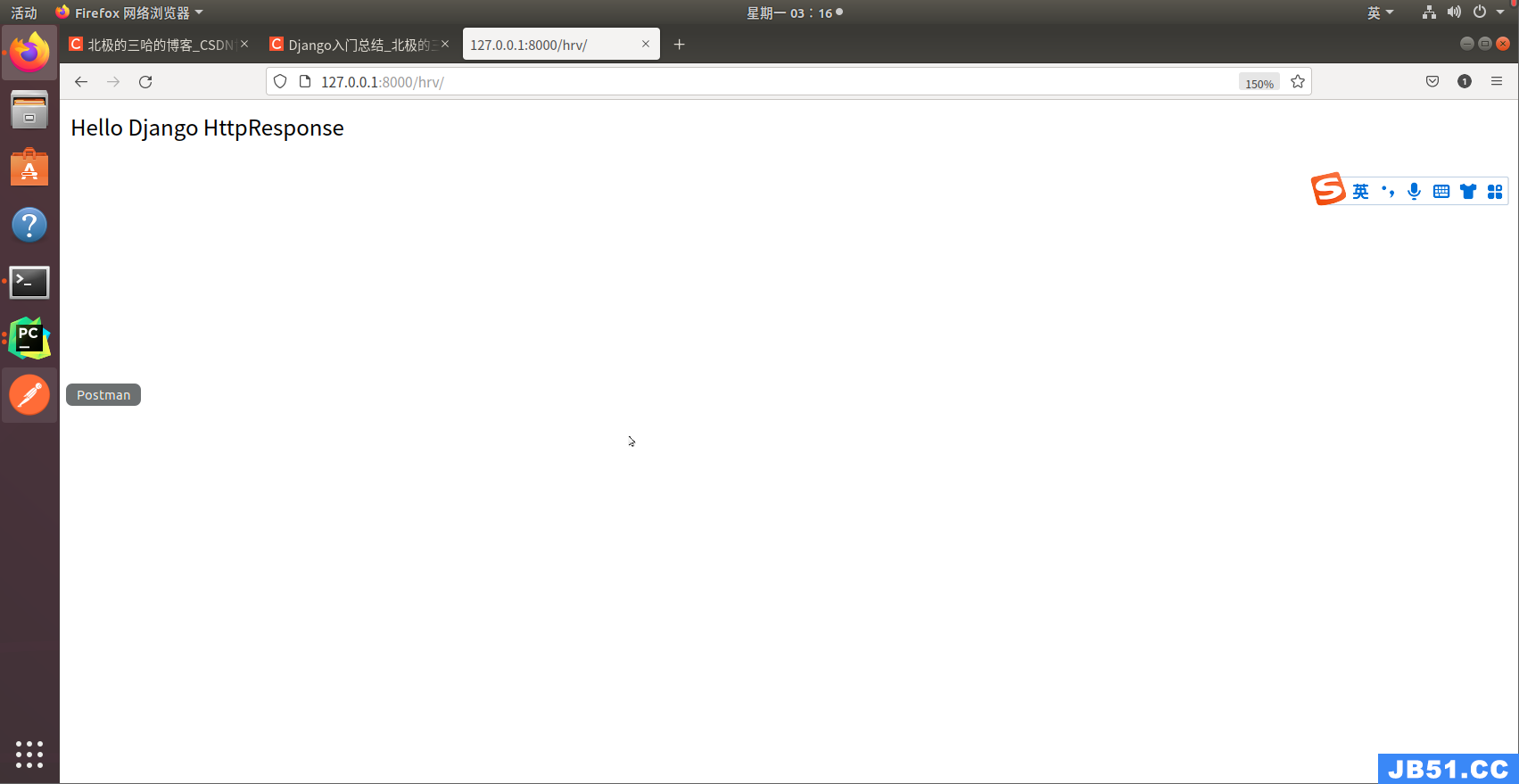

视图在接收请求并处理后,必须返回
HttpResponse对象或⼦对象。
HttpRequest对象由Django创建,HttpResponse对象由开发⼈员创建。
class HttpResponse(HttpResponseBase):
"""
An HTTP response class with a string as content.
This content that can be read,appended to,or replaced.
"""
streaming = False
def __init__(self, content=b'', *args, **kwargs):
super().__init__(*args, **kwargs)
# Content is a bytestring. See the `content` property methods.
self.content = content
def __repr__(self):
return '<%(cls)s status_code=%(status_code)d%(content_type)s>' % {
'cls': self.__class__.__name__,
'status_code': self.status_code,
'content_type': self._content_type_for_repr,
}
def serialize(self):
"""Full HTTP message,including headers,as a bytestring."""
return self.serialize_headers() + b'\r\n\r\n' + self.content
__bytes__ = serialize
@property
def content(self):
return b''.join(self._container)
@content.setter
def content(self, value):
# Consume iterators upon assignment to allow repeated iteration.
if hasattr(value, '__iter__') and not isinstance(value, (bytes, str)):
content = b''.join(self.make_bytes(chunk) for chunk in value)
if hasattr(value, 'close'):
try:
value.close()
except Exception:
pass
else:
content = self.make_bytes(value)
# Create a list of properly encoded bytestrings to support write().
self._container = [content]
def __iter__(self):
return iter(self._container)
def write(self, content):
self._container.append(self.make_bytes(content))
def tell(self):
return len(self.content)
def getvalue(self):
return self.content
def writable(self):
return True
def writelines(self, lines):
for line in lines:
self.write(line)
1. HttpResponse
可以使⽤django.http.HttpResponse来构造响应对象。
HttpResponse(content=响应体, content_type=响应体数据类型, status=状态码)
也可通过HttpResponse对象属性来设置响应体、响应体数据类型、状态码:
-
content:表示返回的内容。 -
status_code:返回的HTTP响应状态码。 响应头可以直接将HttpResponse对象当做字典进⾏响应头键值对的设置:
response = HttpResponse('bei ji de san ha !')
response['bei ji de san ha !'] = 'Python'
# ⾃定义响应头bei ji de san ha,值为Python
示例:
from django.shortcuts import render
from django.http import HttpResponse
# Create your views here.
def response(request):
return HttpResponse(content='Hello HttpResponse', content_type=str, status=400)
或者:
from django.shortcuts import render
from django.http import HttpResponse
# Create your views here.
def response(request):
# return HttpResponse(content='Hello HttpResponse',content_type=str,status=400)
response = HttpResponse('bei ji de san ha !')
response.status_code = 400
response['bei ji de san ha !'] = 'Python'
return respons
2. HttpResponse⼦类
Django提供了⼀系列HttpResponse的⼦类,可以快速设置状态码。
HttpResponseRedirect 301
HttpResponsePermanentRedirect 302
HttpResponseNotModified 304
HttpResponseBadRequest 400
HttpResponseNotFound 404
HttpResponseForbidden 403
HttpResponseNotAllowed 405
HttpResponseGone 410
HttpResponseServerError 500
示例:HttpResponseRedirect 301
视图函数:
from django.shortcuts import render
from django.http import HttpResponse, HttpResponseRedirect
# Create your views here.
def response(request):
return HttpResponseRedirect('/hrv/')
def httpResponseView(request):
return HttpResponse('Hello Django HttpResponse')
路由:
# -*- coding: utf-8 -*-
# @File : urls.py
# @author: 北极的三哈
# @email : Flymeawei@163.com
# @Time : 2022/10/31 上午2:35
""""""
from django.urls import path, re_path
from papp import views
urlpatterns = [
path('response/', views.response),
path('hrv/', views.httpResponseView),
]
访问:127.0.0.1:8000/response/

响应:http://127.0.0.1:8000/hrv/

3. JsonResponse
class JsonResponse(HttpResponse):
"""
An HTTP response class that consumes data to be serialized to JSON.
:param data: Data to be dumped into json. By default only ``dict`` objects
are allowed to be passed due to a security flaw before EcmaScript 5. See
the ``safe`` parameter for more information.
:param encoder: Should be a json encoder class. Defaults to
``django.core.serializers.json.DjangoJSONEncoder``.
:param safe: Controls if only ``dict`` objects may be serialized. Defaults
to ``True``.
:param json_dumps_params: A dictionary of kwargs passed to json.dumps().
"""
def __init__(self, data, encoder=DjangoJSONEncoder, safe=True,
json_dumps_params=None, **kwargs):
if safe and not isinstance(data, dict):
raise TypeError(
'In order to allow non-dict objects to be serialized set the '
'safe parameter to False.'
)
if json_dumps_params is None:
json_dumps_params = {}
kwargs.setdefault('content_type', 'application/json')
data = json.dumps(data, cls=encoder, **json_dumps_params)
super().__init__(content=data, **kwargs)
若要返回json数据,可以使⽤JsonResponse来构造响应对象,作⽤:
-
帮助我们将数据转换为
json字符串 -
设置响应头
Content-Type为application/json
from django.shortcuts import render
from django.http import HttpResponse, JsonResponse
# Create your views here.
def response(request):
# return HttpResponse(content='Hello HttpResponse',status=400)
# response = HttpResponse('bei ji de san ha !')
# response.status_code = 400
# response['bei ji de san ha !'] = 'Python'
# return response
return JsonResponse({'uname': 'san ha', 'age': 22})
访问:http://127.0.0.1:8000/response/
JSON

原始数据

头

4. redirect重定向
def redirect(to, permanent=False, **kwargs):
"""
Return an HttpResponseRedirect to the appropriate URL for the arguments
passed.
The arguments could be:
* A model: the model's `get_absolute_url()` function will be called.
* A view name,possibly with arguments: `urls.reverse()` will be used
to reverse-resolve the name.
* A URL,which will be used as-is for the redirect location.
Issues a temporary redirect by default; pass permanent=True to issue a
permanent redirect.
"""
redirect_class = HttpResponsePermanentRedirect if permanent else HttpResponseRedirect
return redirect_class(resolve_url(to, **kwargs))
视图函数:
from django.shortcuts import render
from django.http import HttpResponse, JsonResponse, HttpResponseRedirect
from django.shortcuts import redirect
# Create your views here.
def response(request):
# return HttpResponse(content='Hello HttpResponse',status=400)
# response = HttpResponse('bei ji de san ha !')
# response.status_code = 400
# response['bei ji de san ha !'] = 'Python'
# return response
# return JsonResponse({'uname': 'san ha','age': 22})
# return HttpResponseRedirect('/hrv/')
return redirect('/hrv/')
def httpResponseView(request):
return HttpResponse('Hello Django HttpResponse')
路由:
# -*- coding: utf-8 -*-
# @File : urls.py
# @author: 北极的三哈
# @email : Flymeawei@163.com
# @Time : 2022/10/31 上午2:35
""""""
from django.urls import path,
]
访问:127.0.0.1:8000/response/

响应:http://127.0.0.1:8000/hrv/

版权声明:本文内容由互联网用户自发贡献,该文观点与技术仅代表作者本人。本站仅提供信息存储空间服务,不拥有所有权,不承担相关法律责任。如发现本站有涉嫌侵权/违法违规的内容, 请发送邮件至 dio@foxmail.com 举报,一经查实,本站将立刻删除。

